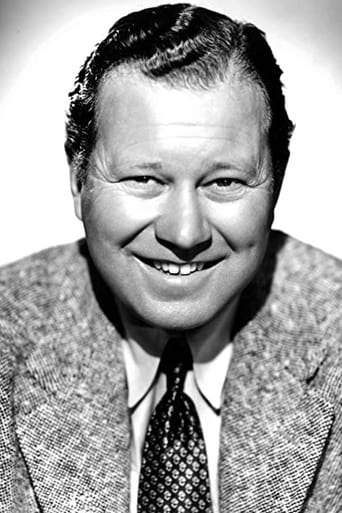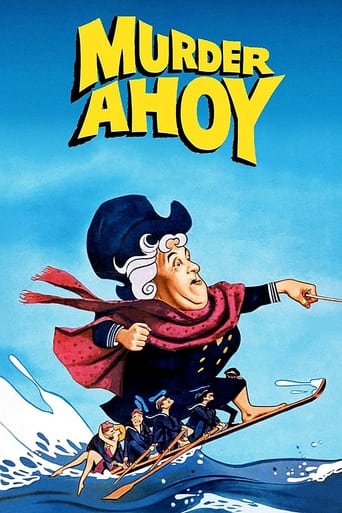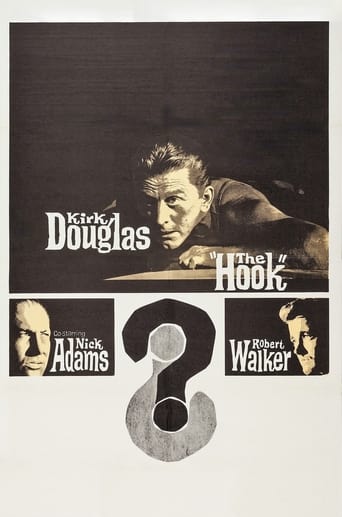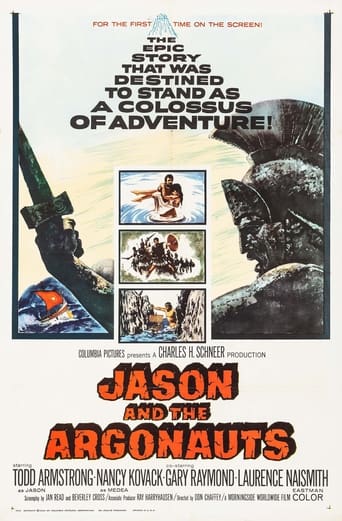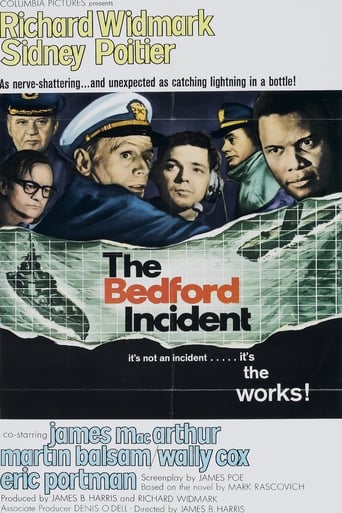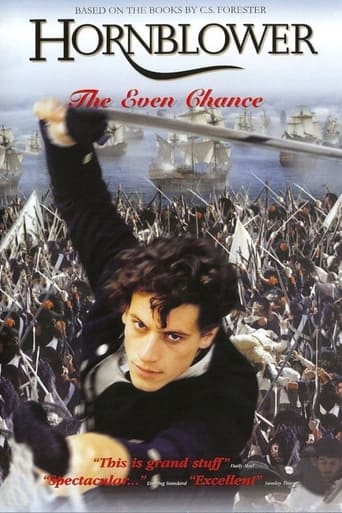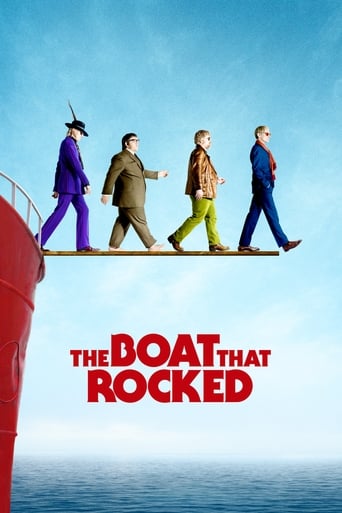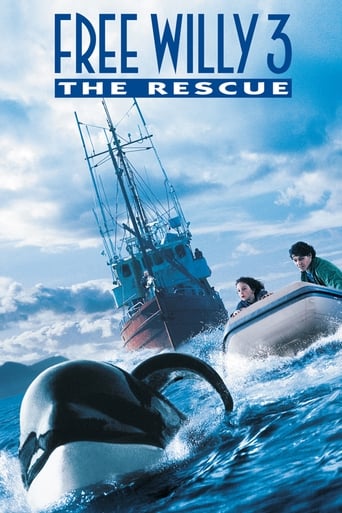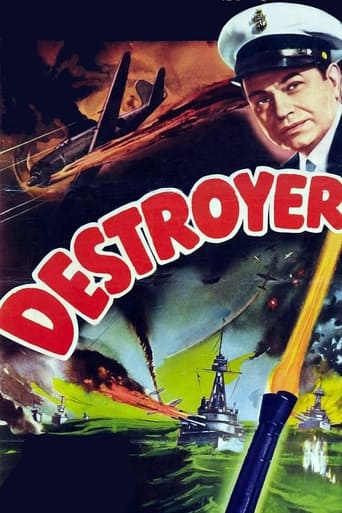
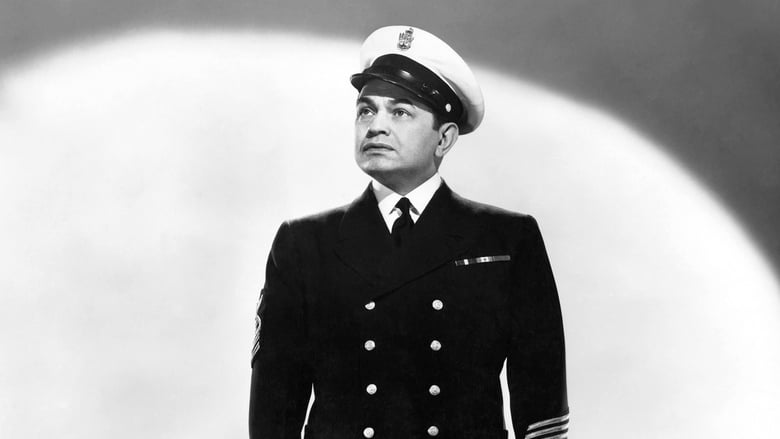
Destroyer (1943)
Flagwaving story of a new American destroyer, the JOHN PAUL JONES, from the day her keel is laid, to what was very nearly her last voyage. Among the crew, is Steve Boleslavski, a shipyard welder that helped build her, who reenlists, with his old rank of Chief bosuns mate. After failing her sea trials, she is assigned to the mail run, until caught up in a disparate battle with a Japanese sub. After getting torpedoed, and on the verge of sinking, the Captain, and crew hatch a plan to try and save the ship, and destroy the sub.
Watch Trailer
Cast


Similar titles
Reviews
Join the navy, see the world, or in the case of the crew of the John Paul Jones II, join the navy and deliver the mail. The fact that this battle ship was meant to see action and simply ended up playing Mr. Postman has upset its commander (Regis Toomey) and his two rival assistants (Edward G. Robinson and Glenn Ford) who differ in how the ship should be run. Robinson's a grizzled old fool who helped build the ship, having served on the original John Paul Jones and aided Toomey in going off to officer's school. He thinks he's entitled, pretty much like an old dog who refuses to learn new tricks, but unbeknownst to him, Ford has fallen in love with Robinson's pretty daughter (Marguerite Churchill).In actuality, their rivalry is really light-hearted, causing an almost comedic relationship between the two which just needs to come to some sort of compromise. Three quarters of the film is done as a comedy, almost inappropriately, between their not so serious rivalry and the presence of two portly crew members, Edgar Buchannan and Edward Brophy. Then, there's Leo Gorcey, pretty much playing his "Bowery Boys" character, given a question by a navy psychiatrist pre-dating "Don't Ask, Don't Tell", inquiring whether or not he likes girls. The comic element of the film is somewhat inappropriate, so when the film switches gears for a confrontation with Japananese planes attacking them, the mood swing seems very severe in spite of being extremely well filmed.With tons of films on the importance of the military during World War II having already been done (and many much better), this one is a slight disappointment because of the way it deals with its subject matter. It's not a complete, disaster, however, because it does provide enough entertainment and some patriotic flag-waving to stir up the hearts and minds of the war era movie going public. Robinson would have better war films, however, with the following year's "Tampico" and the light-hearted "Mr. Winkle Goes to War" which you knew just from the title alone was going to be a comedy with a patriotic twist.
The USS John Paul Jones we see being built is actually the destroyer Hobby, launched in San Pedro in June, 1942. Not that it would matter to Edward G. Robinson. He was the retired Chief Boatswain who was one of the welders at the shipyard, reenlisted, and was assigned to the Jones, proud of "his" ship.This is a cornball, flag-waving tribute to destroyers, and it's enjoyable for what it is. The original story is by Frank Wead, who knew something about the Navy, and many of the details of boot camp and shipboard life are precisely captured. The pace becomes Dead Slow when Robinson's pretty daughter falls for Glen Ford and a mercifully brief courtship is carried on.Once all of the characters that we've been introduced to are aboard the Jones, including the wisecracking Ford, as Robinson's main rival for senior enlisted man, the story gets down to business. On the shakedown cruise, just after commissioning, the John Paul Jones practically falls apart, piece by piece. The gunnery is way off because old-fashioned blustering Robinson has forgotten about leading the target. But more important, the engineering pops a dozen assorted corks and returns to San Diego several times for repairs.The frustration mounts at both high levels and low. Enough is enough. The Jones is kept out of battles and assigned to mail-carrying duty in the Northwest. The men mope before collectively writing requests for transfer, salivating as they are over the prospect of getting into the fight. They decide to stick it out after listening to a rousing pep talk from Robinson. And, mail or no mail, the Jones is attacked by half a dozen "Mitsubishis" (Douglas SBDs and one anomalous TBM Avenger.) All the attacking airplanes are destroyed but the Jones is torpedoed, strafed, and kamikazed. So badly, in fact, that seawater reaches the boilers, the ship lists badly, and may capsize at any moment. The crew abandon the ship except for a small damage control party led by Robinson, which manages to restore power and ram a Japanese submarine that has been tracking them. The damage and repair is unusual in its molecularity. Damage control is ordinarily an unglamorous business, as is most stuff below decks, but here we can follow the progress of the men, and it's interesting. Where else can you see a boiler extinguished by a rush of sea water? Usually these technical details are avoided by having an officer run to the bridge, salute, and report breathlessly, "Captain, we've lost power on all engines." The snipes deserve a little attention. The ship is celebrated in the press. Ford marries the girl, Robinson is satisfied that the ship is now the proud vessel he always considered her and he retires to the beach.Well, it's improbable and old-fashioned but it's accurate enough in its observance of ritual that it brought back embarrassing memories of my years in the Coast Guard. The first night in boot camp, the men are exhausted and homesick. Seiter's camera rolls slowly between the bunks neatly aligned, with two seabags hanging from each frame. (I'm back in boot camp, getting gigged for not tying the seabag's knot properly.) And the cocky chief boatswain's mate Robinson emerges from a building and chews out two sailors lounging on the staircase -- one for "thinking" what he ought to "know" (I'm standing guard at the Air Station at San Francisco International Airport being excoriated over the phone) and the other for wearing his cap on the back of his head ("Adjust your cover", commands the Marine at the entrance to Hunter's Point).The ending is touching in its sentiment, although it's still hackneyed. If you enjoyed the scene of John Wayne's (Spig Wead's) departure from the carrier at the end of "Wings of Eagles," you'll find this scene somewhat touching too.
First Rate for the period. A good patriotic Navy film, in the class with "Men of Honor" and Top Gun. Great depiction of sailors,Ships and the sea. As a U.S. Navy Veteran and "Tin-can-Sailor" an affectionate term for "Destroyer" Sailors, this shows the connection of the men and the Ship. The personality and the Valor of the Ship and her namesake and the men that make HER sail. To the sailor she is more than just steel that floats, she is Life; one lives, eats and sleeps the ship. If she don't float, we die. She takes us in harm's way and if we do it right, she brings us home. Home is the sailor, home from the sea. "Well done "Boli."
"Destroyer" (1943) Shipbuilder Steve 'Boley' Boleslavski (Edward G. Robinson) reenlists as a chief on the replacement for his old destroyer the U.S.S. John Paul Jones. His old friend, ship fitter & friend Kansas Jackson (Edgar Buchanan) joins him as a Shipfitter 1st Class. Once on the ship Steve immediately steps on the toes of Mickey Donohue (Glenn Ford) by taking over his rate of Chief Gunnery Mate.Then, later that evening, Mickey goes to the U.S.O. & meets Mary...that's Mary Boleslavski (Marguerite Chapman). He walks her home & learns her last name. There's a little mix up between the guys on the front porch. What is going to happen next? We can easily expect more trouble between Boley & Mickey. Will Boley agree to a permanent relationship between Mick & Mary? Good question.The ship will have more problems that will put the crew in danger. W.O.W. Those shake down cruises are dangerous.




